Memorex for the Krakens: The Fall’s Pulp Modernism
Mon. May 8, 2006Categories: Abstract Dynamics
PART 1 – part II to follow shortly…
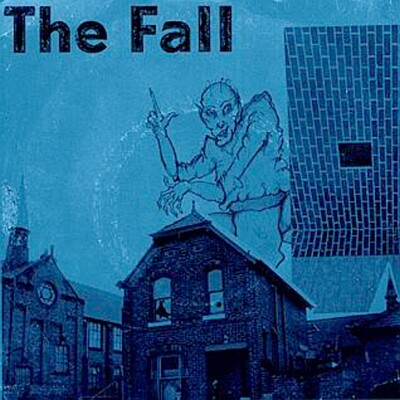
Dragnet sleevenotes: ‘maybe industrial ghosts are making Spectres redundant’
Specter Versus Rector: ‘MR James be born be born/ Yog Sothoth rape me lord/ Sludge Hai Choi/Van Greenway/Ar Corman’
Mark Sinker: ‘Scrawny, gnarled, gaunt: Smith doesn’t waltz with ghosts. He materialises them.’
Who can put their finger on the Weird?
Its taken me more than twenty years to attempt this deciphering. Back then, the Fall did something to me. But what, and how?
Lets call it an Event, and at the same time note that all Events have a dimension of the uncanny. If something is too alien, it will fail to register; if it is too easily recognized, too easily cognizable, it will never be more than a reiteration of the already known. When The Fall pummeled their way into my nervous system, circa 1983, it was as if a world that was familiar – and which I had thought too familiar, too quotidian to feature in rock – had returned, expressionistically transfigured, permanently altered.
I didn’t know than, that, already, in 1983, The Fall’s greatest work was behind them. No doubt the later albums have their merits but it is on Grotesque (1980), Slates (1981) and Hex Enduction Hour (1982) where group the reached a pitch of sustained abstract invention that they – and few others – are unlikely to surpass. In its ambition, its linguistic inventivenss and its formal innovation, this triptych bears comparison with the great works of twentieth century high literary modernism (Joyce, Eliot, Lewis). The Fall extend and performatively critique that mode of high modernism by reversing the impersonation of working class accent, dialect and diction that, for example, Eliot performed in The Waste Land. Smiths strategy involved aggressively retaining accent while using – in the domain of a supposedly popular entertainment form – highly arcane literary practices. In doing so, he laid waste the notion that intelligence, literary sophistication and artistic experimentalism are the exclusive preserve of the privileged and the formally educated. But Smith knew that aping master class morés presented all sorts of other dangers; it should never be a matter of proving (to the masters) that the white crap could be civilized. Perhaps all his writing was, from the start, an attempt to find a way out of that paradox which all working class aspirants face – the impossiblility of working class achievement. Stay where you are, speak the language of your fathers, and you remain nothing; move up, learn to speak in the master language, and you have become a something, but only by erasing your origins – isn’t the achievement precisely that erasure? (‘You can string a sentence together, how can you possibly be working class, my dear?’)
The temptation for Smith was always to fit into the easy role of working class spokesman, speaking from an assigned place in a given social world. Smith played with that role (‘the white crap that talks back’, ‘Prole Art Threat’, ‘Hip Priest’) whilst refusing to actually play it. He knew that representation was a trap; Social Realism was the enemy because in supposedly ‘merely’ representing the social order, it actually constituted it. Against the Social Realism of the official left, Smith developed a late twentieth century urban English version of the ‘grotesque realism’ Bakhtin famously described in Rabelais and his World. Crucial to this grotesque realism is a contestation of the classificatory system which deems cultures (and populations) to be either refined or vulgar. As Peter Stallybrass and Allon White argued, ‘the grotesque tends to operate as a critique of a dominant ideology which has already set the terms of, designating what is high and low’.
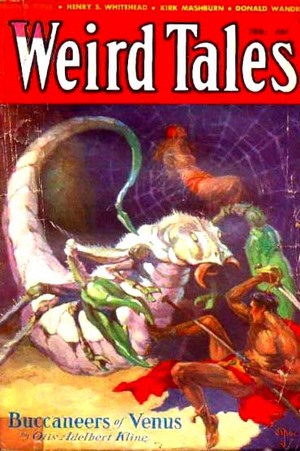 | 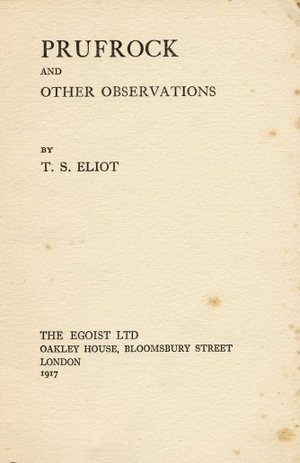 |
Instead of the high modernist appropriation of working class speech and culture, Smith’s pulp modernism reacquaints modernism with its disavowed pulp doppelganger.
Lovecraft is the crucial figure here since his texts – which first appeared in pulp magazines like Weird Tales – emerged from an occulted trade between pulp horror and modernism. Follow the line back from Lovecraft’s short stories and you pass through Dunsany and M R James before coming to Poe. But Poe, also played a decisive role in the development of modernism – via his influence on Baudelaire, Mallarmé, Valéry and their admirer T.S. Eliot. The Waste Lands debt to Dracula, for instance, is well-known. The fragmentary, citational structure of a story like Lovecraft’s Call of Cthulhu, meanwhile, recalls The Waste Land. More than that: as Benjamin Noys argued in his paper ‘Lovecraft the Sinthome’ (given at the recent Gothic Remains conference at Sussex), the abominations from which Lovecrafts strait-laced scholars recoil bear comparisons with cubist and futurist art: Lovecraft, that is to say, turns modernism into an object of horror.
Yet Lovecraft’s texts are exemplary of Weird, rather than straightforwardly Gothic, fiction. Weird fiction has its own consistency, which can be most clearly delineated by comparing it to two adjacent modes, Fantasy and the Uncanny. Fantasy (and Tolkien is the exemplar here) presupposes a completed World, a world that, although superficially different to ‘ours’ (there may be different species, or supernatural forces) is politically all-too familiar (there is usually some nostalgia for the ordered organization of feudal hierarchy). The Uncanny, meanwhile, is set in ‘our’ world – only that world is no longer ‘ours’ any more, it no longer coincides with itself, it has been estranged. The Weird, however, depends upon the difference between two (or more) worlds – with ‘world’ here having an ontological sense. It is not a question of an empirical difference – the aliens are not from another planet, they are invaders from another reality system. Hence the defining image is that of the threshold, the door from this world into another, and the key figure is the ‘Lurker at the Threshold’ – what, in Lovecraft’s mythos is called Yog Sothoth. The political philosophical implications are clear: there is no World. What we call the world is a local consensus hallucination, a shared dream.
Is there anybody there?
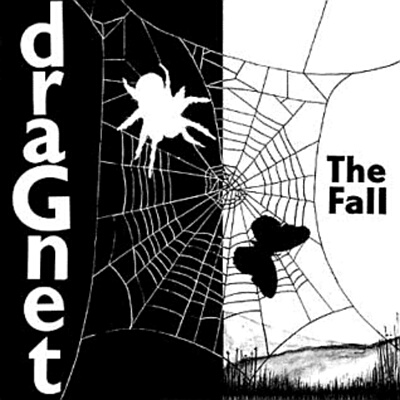
‘Part One: of Spectre vs Rector/The Rector lived in Hampshire (the Spectre was from Chorazina)
‘Spectre vs Rector’, from 1979’s Dragnet, is the first moment – still chilling to hear – when The Fall both lay out and implement their pulp modernist methodology. Spectre versus Rector is not only a ghost story, it is a commentary on the ghost story. The chorus, if it can be called that, is a litany of pulp forebears – ‘MR James be born be born/ Yog Sothoth rape me lord…’ – in which language devolves into asignifying chant, verbal ectoplasm: ‘Sludge Hai Choi/Van Greenway/Ar Corman’.
Not coincidentally, Spectre vs Rector was the moment when The Fall really began to sound like themselves. Before that, The Falls sound is a grey-complexioned, conspicuously consumptive garage plink-plonk punk, amphetamine-lean and on-edge, marijuana-fatalistic , simultaneously arrogant and unsure of itself, proffering its cheap and nastiness as a challenge. All of the elements of Smiths later (peripheral) vision are there on Live at the Witch Trials and on the other tracks on Dragnet watery-eyed figures lurking in the corner of the retina, industrial estates glimpsed through psychotropic stupor – but they have not yet been condensed down, pulped into the witches brew that will constitute Smiths plane of consistency.
On Specter versus Rector, any vestigial rock presence subsides into hauntology. The original track is nothing of the sort it is already a palimpsest, spooked by itself; at least two versions are playing, out of sync. The track and it is very definitely a track, not a song – foregrounds both its own textuality and its texturality. It begins with cassette hum and when the sleeve notes tell us that it was partly ‘recorded in a damp warehouse in MC/R’ we are far from surprised. Steve Hanleys bass rumbles and thumps like some implacable earth-moving machine invented by a deranged undergound race, not so much rising from subterranea as dragging the sound down into a troglodytic goblin kingdom in which ordinary sonic values are inverted. From now on, and for all the records that really matter, Hanleys bass will be the lead instrument, the monstrous foundations on which the Fall’s upside-down sound will be built. Like Joy Division, fellow modernists from Manchester, The Fall scramble the grammar of white rock by privileging rhythm over melody.
Fellow modernists they might have been, but The Fall and Joy Division’s take on modernism could not have been more different. Hannett and Saville gave Joy Division a minimalist, metallic austerity; The Fall’s sound and cover art, by contrast, was gnarled, collage cut-up, deliberately incomplete. Both bands were dominated by forbiddingly intense vocalist-visionaries. But where Curtis was the depressive-neurotic, the end of the European Romantic line, Smith was the psychotic, the self-styled destroyer of Romanticism.
Unsuitable for Romantics, Smith will graffiti onto the cover of Hex Enduction Hour, and Specter versus Rector is the template for the anti-Romantic methodology he will deploy on The Fall’s most important releases. After Spectre Versus Rector, there is no Mark E Smith the romantic subject. The novelty of Smith’s approach is to impose the novel or tale form (‘Part 1 of spectre versus rector….’) into the Romantic-lyrical tradition of the r and r song, so that the author-function supplants that of the lyrical balladeer. (There are parallels between what Smith does to rock and the cut-up surgery Eliot performed on the etherized patient of Romantic expressive subjectivity in his early poems). Smith chant-narrates, not sings, ‘Spectre Vs Rector’.
The story is simple enough, and, on the surface, is deliberately conventional: a post-Exorcist revisiting of the classic English ghost story. (At another level, the narrative is generated by a Roussel-like playing with similar words: Rector/Spectre/Inspector/Excorcist/Exhausted.) A rector is possessed by a malign spirit (‘the spectre was from Chorazina’ – described on the sleevenotes as ‘a negative Jerusalem’); a police inspector tries to intervene but is driven insane. (This a real Lovecraftian touch, since the dread fate that haunts Lovecraft’s characters is not of being consumed by the polytendrilled abominations but by the schizophrenia that their appearance often engenders.) Both Rector and Inspector have to be saved by a third figure, a shaman-hero, an Outsider who ‘goes back to the mountains’ when the exorcism is complete.
The Rector stands for rectitude and rectilinearity as well as for traditional religious authority. (The ontological shock that Lovecraft’s monstrosities produce is typically described, any Lovecraft reader will recall, in terms of a twisting of rectilinear geometries.) The Inspector, meanwhile, as Ian Penman conjectured in his 1980 interview with The Fall stands for an investigative, empirical world view. The hero (‘his soul possessed a thousand times’) has more affinity with the Spectre, whom he absorbs and becomes (‘the spectre possesses the hero/ but the possession is ineffectual’) than with the agents of rectitude and or empirical investigation. It seems that the hero is driven more by his addiction to being possessed, which is to say dispossessed of his own identity (‘that was his kick from life’) than from any altruistic motive. He has no love for the social order he rescues (‘I have saved a thousand souls/ they cannot even save their own’) but in which he does not occupy a place. ‘ “Those flowers take them away” he said/ “they’re only funeral decorations/ and this is a drudge nation/ a nation of no imagination/ a stupid dead man is their ideal/ they shirk me and think me unclean….. UNCLEAN…..”‘
In Madness and Civilization, Foucault argues that the insane occupy the structural position vacated by the leper, while in ‘The Ecstasy of Communication’, Baudrillard describes ‘the state of terror proper to the schizophrenic: too great a proximity of everything, the unclean promiscuity of everything which touches, invests and penetrates without resistance, with no halo of private projection to protect him anymore.’ Baudrillard is of course describing the schizophrenia of media systems which overwhelm all interiority. Tele-vision brings us voices from far away (and there’s always something on the other side…) For Baudrillard, there is an increasing flatness between media and the schizophrenic delirium in which they feature; psychotics often describe themselves as receivers for transmitted signal. And what is the hero of ‘Specter versus Rector’ if not another version of the ESP medium of discord that Smith sings of on Psychic Dancehall?
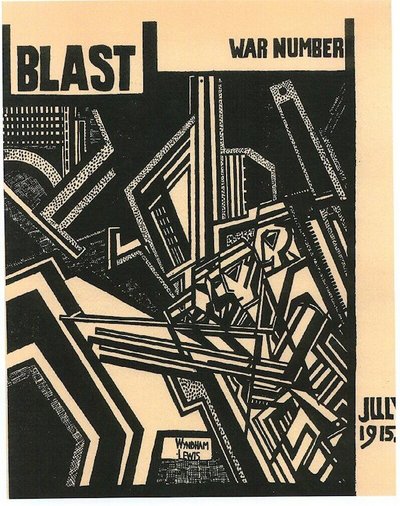
Smith’s own methodology as writer-ranter-chanter echoes that of the hero-malcontent. He becomes (nothing but) the mystic pad on which stray psychic signals impress themselves, the throat through which a warring multiplicty of mutually antatognistic voices speak. This is not only a matter of the familiar idea that Smith contains multitudes; the schizophonic riot of voices is itself subject to all kinds of mediation. The voices we hear will often be reported speech, recorded in the compressed ‘telegraphic headline style Smith borrowed from the Lewis of Blast.
Listening to The Fall now, I’m often reminded of another admirer of Lewis, Marshall McLuhan. The McLuhan of The Mechanical Bride (subtitle: The Folklore of Industrial Man), understood very well the complicity between mass media, modernism and pulp. McLuhan argued that modernist collage was a response to the perfectly schizophrenic layout of the newspaper front page. (And Poe, who in addition to his role as a forebear of Weird fiction, was also the inventor of the Detective genre, plays a crucial role in The Mechanical Bride.)
NEXT – In Part 2: Grotesque Peasants! Psychedelic Communism! Bare Unlife! Ragnorock!